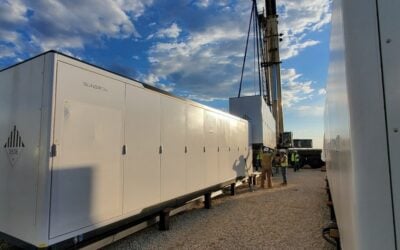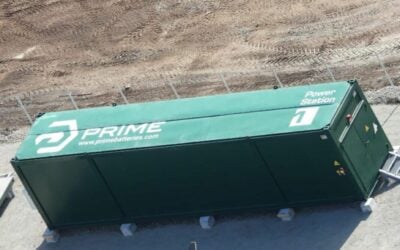
Three virtual power plant (VPP) programmes have been announced in California and Colorado. Two of them will use Tesla’s Powerwall battery while another is attempting to change customer habits to save energy and money.
PG&E to provide up to 1,500 home BESS units
California utility Pacific Gas and Electric (PG&E) has launched a VPP programme that looks to provide up to 1,500 customers with battery energy storage systems (BESS).
Enjoy 12 months of exclusive analysis
- Regular insight and analysis of the industry’s biggest developments
- In-depth interviews with the industry’s leading figures
- Annual digital subscription to the PV Tech Power journal
- Discounts on Solar Media’s portfolio of events, in-person and virtual
Or continue reading this article for free
The Seasonal Aggregation of Versatile Energy (SAVE) and Electric Program Investment Charge (EPIC) programmes will create a VPP that harnesses residential distributed energy resources to reduce local grid constraints.
In addition to the 1,500 BESS customers, PG&E will provide up to 400 customers with smart electric panels.
The VPP will be dispatched to selected neighbourhoods during peak demand periods for up to 100 hours from June through October.
PG&E describes SAVE as a “demonstration” VPP, wherein participating aggregators, including residential solar and battery installer Sunrun and smart electrical panel company SPAN receive week-ahead hourly signals informed by grid needs.
The signals from PG&E indicate the utility’s energy capacity needs so the aggregators can shift customers’ usage to meet those needs.
PG&E says that SAVE has made explicit efforts to include approximately 60% of participants in the programme as customers in disadvantaged or low-income communities.
SAVE is being conducted through EPIC, which enables California investor-owned utilities to demonstrate new technologies and evaluate how they support safety, reliability, and affordability objectives for the benefit of all California electric customers.
SPAN will enrol customers with its smart electric panels to receive dispatch signals and deliver targeted load relief.
Customers with smart panels will be able to adjust how the panels manage appliances during peak hours, helping alleviate grid congestion.
Sunrun is using Tesla’s Powerwall batteries and what it says is an advanced application of Tesla’s grid services platform to optimise the batteries to provide an exact amount of power at specific times and to specific locations.
With the Powerwall’s base energy capacity of 13.5KWh and the battery being provided to up to 1,500 customers, the VPP could achieve a capacity of approximately 19.5MWh.
Xcel Energy partnering with Itron and Tesla
Also collaborating with Tesla for a VPP programme is tech company Itron, which is deploying a VPP in Colorado with utility Xcel Energy.
Itron says the programme enables Xcel to enhance the management of distributed energy resources (DERs) and the value they provide for customers.
The programme will use Itron’s IntelliFLEX Aggregator DER management systems (DERMS), which is part of the company’s Grid Edge Intelligence portfolio.
Essentially, this allows energy providers to aggregate and localise the management of DERs.
The IntelliFLEX solution will be directly integrated with Tesla Powerwall batteries. Xcel will be able to manage customers’ batteries during peak demand to help stabilise the grid.
This collaboration is helping expand Xcel’s Battery Connect programme. Microinverter and home energy storage system supplier Enphase Energy is also part of this programme.
As part of the programme, homeowners who decide to install an Enphase IQ Battery and are Xcel Energy customers in Colorado are eligible to receive an upfront incentive of US$350/kW, capped at US$5,000 per site. Customers who decide to install three IQ Battery 5Ps could earn US$4,032 upfront plus an annual payment of US$100 over the five-year participation period.
San José Clean Energy VPP targets residential, CCI customer segments
Meanwhile, in San José, California, clean energy tech company Uplight is partnering with utility San José Clean Energy to expand the utility’s demand response program.
San José Clean Energy will be able to enroll a total of 25MW of dispatchable energy by 2028 and 5MW by the end of this summer.
The utility is targeting residential and community-scale and commercial & industrial (CCI) customer segments.
Through device control and what Uplight calls “behavioural motivation”, customers’ in the programme will be part of a VPP made up of DERs.
The utility can call events that incentivise customers to reduce or shift their energy during times of peak demand.
At the end of the year, customers will be given the option to enroll a variety of grid-connected devices in the program. This includes smart thermostats, home batteries, EV chargers and water heaters.
Uplight also says that it is collaborating with San José Clean Energy to expand the demand response format.
The companies will use various strategies, including encouraging customers to charge their EVs during the midday hours, when solar energy is abundant.
In addition, the utility will provide quarterly bill credits for performance, allowing participants in the programme to save on their energy bills based on their energy saving practices.
Uplight was formed through the 2019 merger of a group of separate start-ups, including Simple Energy and Tendril.
The company has multiple solutions for utilities to engage with customers and better manage the electric grid.
Recently, independent power producer (IPP) NextEra Energy Resources (NEER) successfully renegotiated the terms of an offtake agreement with San José Clean Energy (Premium access) for one of the developer’s solar and storage projects located in Clark County, Nevada.






